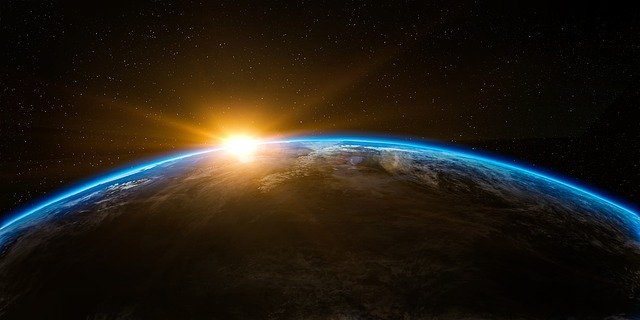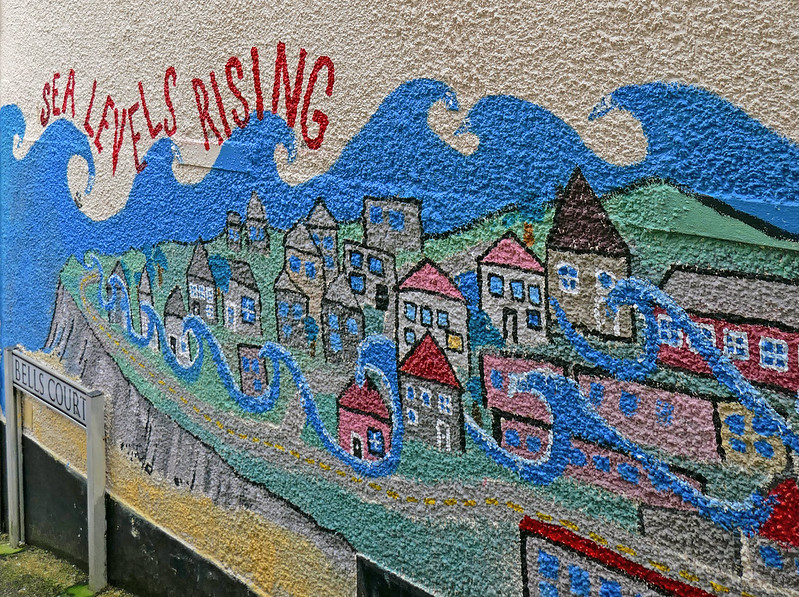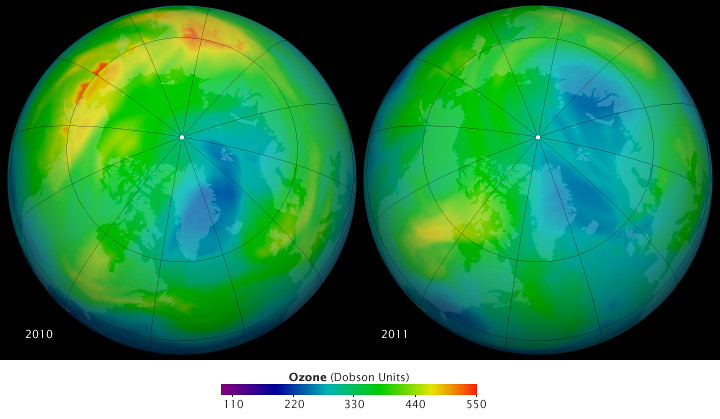
Have you ever thought about those parts of the world that doesn’t belong to any nation? If you have, you might know that these are known as the global commons. The High seas, the Atmosphere, Outer space and Antarctica are the four supra-national spaces that all nations have access. Imagine that everyone can use or take as much as they want to without control, it would be a complete disaster. Therefore, these commons are guided by the Common Heritage of Mankind (CHM) and “protected” by international laws and treaties.
The Common Heritage of Mankind is a principle which needs to be considered by all nations to protect defined areas, resources and species in the global commons and by doing so, guarantee their existence for future generations and needs of developing countries. Nowadays these global commons are under threat because of the advances in science and technology since it is easy to have greater access to natural resources and it is also easier to go to outer space. Also, new activities have been introduced to these areas with no regulation to control its uses.
The pressure on the global commons have increased due to public and private interests, and demand for resources, which have caused overexploitation. As you might remember, our world is a big system in which all its parts interrelate to one another, so every environmental challenge outside the global commons also affects them such as climate change, depletion of the ozone layer and global warming.
The high seas

The oceans are very important to the Earth’s system because they work as a regulator and as a balance. Imagine how many processes and systems are in the oceans, and not only that, they are home of uncountable species known and unknown. The oceans are part of the carbon cycle, moderate and influence the climate and weather patterns. A good example of it is the ocean currents, the warm currents increase the temperature of the areas next to it and cold currents bring cool weather. Moreover, oceans absorb heat and with it, they give life to the phytoplankton (microalgae) which provides food for some sea creatures.
The high seas -also known as Areas Beyond National Jurisdiction (ABNJ)- represent forty per cent of the surface of the planet and two-thirds of the world’s oceans; these areas are outside the Exclusive Economic Zone (EEZ) of each coastal nation. There’s great biodiversity in these areas, it’s full of life and structures such as whales (among other creatures) and hydrothermal vents, corals and seamounts.
In 1982, a treaty called the United Nations Convention on the Law of the Sea (UNCLOS) was signed to regulate and manage the activities and use of the world’s oceans. The EEZs were established in this treaty as a part of the nation’s territory where each country has the power to use 200 nautical miles area to explore it and use the resources. However, they must have laws to give proper management to it in order to avoid overexploitation. There are other organisations along with the UN that help to protect, regulate and defend areas and species under threat such as the High seas alliance, International Whaling Commission, Antarctic and Southern Ocean Coalition, just to mention a few of them.
The high seas are under constant threat due to human activities like fishing, shipping, aquaculture, rocket launches, bioprospecting¹, power generation and seabed mining (which is supposed to be controlled by the International Seabed Authority). Another significant problem is pollution. The effects of industrial and urban growth along with a lack of environmentally friendly culture from us, have caused stress over the oceans; no matter how far the pollutants are from the ocean, they will always find a way to reach them. Ocean garbage patches are an example of the damage made to the oceans, sea life and seabirds.
There are some gaps among the regulations that leave biodiversity and ecosystems with no protection, therefore the UN has started the negotiation to reach an agreement to create marine protected areas (MPAs) and preserve them.
The atmosphere
The Earth’s Atmosphere is a mix of gases like nitrogen, oxygen, argon, carbon dioxide and others, and is divided into five layers (troposphere, stratosphere, mesosphere, thermosphere and exosphere). There are lots of Atmospheric processes that shape the Earth, some of these are linked to climate and weather patterns.
The pollution problems began with the Industrial Revolution, the levels of smoke pollution increased drastically within the years and so the coal consumption, chemical discharges in the rivers along with untreated human waste were another problem affecting water quality, air quality and human health. The pollution reached a tipping point, so environmental laws were born to regulate emissions and chemicals.

During the 20th century, the pollution problem rose to a global scale, it was very clear that something needed to be done to reduce the effects of it such as the Ozone layer depletion. Therefore, the United Nations organised an International environmental agreement called The Montreal Protocol, which was held in the city of Montreal and signed in 1987. This treaty became a great achievement because the 197 nations recognised by the UN signed it.
The Montreal Protocol (MP) regulates the chemicals that affect the ozone layer, these chemicals are known as ozone-depleting substances (ODS). As you might know, the ozone layer is the one protecting us from UV radiation from the sun, but sadly, this layer is being damaged by the ODS when these are released to the atmosphere. The Hydrochlorofluorocarbons (HCFCs) are powerful ODS and greenhouse gases that really affect the ozone (we can find them in air-conditioning). Thus, the MP decided to phase out them completely by 2020 due to its level of dangerousness.
Another important treaty is the Paris Agreement which is part of the United Nations Framework Convention on Climate Change. This agreement wants to deal with climate change by making a few changes on the global systems with the support of nations, and by doing so, keeping temperature below 2 degrees Celsius and preferably below 1.5. Countries are being asked to send reports of their emissions and what are they doing to reduce the effects of climate change.
Outer space
In 1957 Sputnik-1 was launched marking the beginning of the space age. The United Nations saw the increased interest on outer space and in 1958 decided to create the Committee on the Peaceful Uses of Outer Space (COPUOS) “…to govern the exploration and use of space for the benefit of all humanity: for peace, security and development.”2 The United Nations Office for Outer Space Affair (UNOOSA) was also created to help and bring expert service to COPUOS.
As space activities became popular, it was necessary to create an international space law to govern and control activities in outer space and to make clear that it doesn’t belong and cannot be appropriated by any nation. Consequently, in 1967 the Outer Space Treaty was opened for signature, becoming the basis of the international space law. Hitherto 107 countries have signed it.
To complement the Outer Space treaty and to keep peaceful exploration, four other treaties and five principles were added.
| Treaties | Principles |
| Outer Space TreatyTreaty on Principles Governing the Activities of States in the Exploration and Use of Outer Space, including the Moon and Other Celestial Bodies | Declaration of Legal PrinciplesDeclaration of Legal Principles Governing the Activities of States in the Exploration and Uses of Outer Space |
| Rescue AgreementAgreement on the Rescue of Astronauts, the Return of Astronauts and the Return of Objects Launched into Outer Space | Broadcasting PrinciplesThe Principles Governing the Use by States of Artificial Earth Satellites for International Direct Television Broadcasting |
| Liability ConventionConvention on International Liability for Damage Caused by Space Objects | Remote Sensing PrinciplesThe Principles Relating to Remote Sensing of the Earth from Outer Space |
| Registration ConventionConvention on Registration of Objects Launched into Outer Space | Nuclear Power SourcesThe Principles Relevant to the Use of Nuclear Power Sources in Outer Space |
| Moon AgreementAgreement Governing the Activities of States on the Moon and Other Celestial Bodies | Benefits DeclarationThe Declaration on International Cooperation in the Exploration and Use of Outer Space for the Benefit and in the Interest of All States, Taking into Particular Account the Needs of Developing Countries |
UNOOSA. Space Law Treaties and Principles
One of the main conflicts related to outer space was the Geosynchronous Earth Orbit (GEO) topic, which is a circular orbit in the equatorial plane 22,236 miles above the Earth. But why? Economically speaking this orbit is the most important and valuable part because is where satellites are placed allowing them to match Earth’s rotation. It is great for telecommunication satellites and for monitoring weather and surveillance. The International Telecommunication Union (ITU) took the responsibility to assign geostationary slots to countries, to have a certain control on the use of spaces in this orbit.
The Debris pollution in space is an increasing issue because there is not a treaty tackling the problem, there is just a voluntary guideline called Space Debris Mitigation Guidelines of the Committee on the Peaceful Uses of Outer Space. This debris poses a threat to satellites or spacecraft due to the possibilities of a collision which can cause great damage to them.
Antarctica
Antarctica is a very important global common. It is in the Southern Hemisphere along with the Antarctic Convergence. The Antarctic continent is mostly covered by an ice sheet, it is also habitat of a great number of species and an area of vast unexploited resources which is why it is under the protection of different treaties and NGO’s.
This global common will be explained and discussed in a separate article due to the extension of the topic.
The tragedy of commons
The ecologist Garret Hardin (1915-2003) was the first to talk about this topic when he wrote an essay titled “The tragedy of the commons” which was published in 1968.
To explain the tragedy in a very simple way, think on forest and imagine that there are five people in the area, each one with a family to support. One day one of those people cut a tree so he/she can sell the wood, eventually, the others do the same, but cutting trees in a responsible way wouldn’t pose a threat. Although, if you make the maths, would mean that they cut 25 trees in 5 days. Nevertheless, the five decide to start putting more and more trees than they should because they have found a way to make good profits. So, if they doubled the cuts from 5 a day to 10 that would mean that 50 trees were lost in just a week. Anyway, one day they realise that they have deforested the whole area, therefore there will be no more wood to sell and consequently no money to sustain their families, but also means no water, no animals, more heat and destruction of an ecosystem which will take decades to be restored. That’s the tragedy of the commons.
The Sustainable Development Goals are a possible solution to eliminate the threats to the global commons. We truly need to find a balance between our human activities and the exploitation of natural resources, because no matter how many treaties and regulations can be made, if nations don’t cooperate, we will never achieve those goals and therefore we won’t be able to save the Earth’s ecosystems.
Frequently Asked Questions
What are global commons, and what are some examples?
Global commons are shared resources or areas beyond the jurisdiction of any single country. Examples include the high seas, outer space, and the atmosphere.
Why is the sustainable management of global commons crucial for the planet?
Sustainable management is essential to prevent overexploitation and environmental degradation of these shared resources, ensuring their availability for future generations.
How do international agreements address the protection and use of global commons?
International agreements, such as the Paris Agreement on climate change and the United Nations Convention on the Law of the Sea, establish guidelines and regulations for the responsible use and protection of global commons.
What challenges arise when managing global commons?
Challenges include conflicts over resource use, enforcement of international agreements, and addressing the interests of all nations while preserving these vital resources.
How can global cooperation and governance be enhanced to safeguard global commons?
Global cooperation can be strengthened through diplomacy, international treaties, and scientific research to ensure the sustainable management and preservation of global commons.
Sources and links for further information
- Areas beyond national jurisdiction https://www.thegef.org/topics/areas-beyond-national-jurisdiction
- A Timeline of the Exploration and Peaceful Use of Outer Space http://www.unoosa.org/oosa/en/timeline/index.html
- Bioprospecting¹ http://www.undp.org/content/sdfinance/en/home/solutions/bioprospecting.html
- Climate action https://www.un.org/sustainabledevelopment/climate-action/
- Committee on the Peaceful Uses of Outer Space2 http://www.unoosa.org/oosa/en/ourwork/copuos/index.html
- Currents https://oceanservice.noaa.gov/education/tutorial_currents/05conveyor2.html
- DELC https://cil.nus.edu.sg/wp-content/uploads/2015/12/Ses4-7.-UNEP-Division-of-Environmental-Law-and-Conventions-Global-Commons.pdf
- Exclusive Economic Zone http://www.un.org/Depts/los/convention_agreements/texts/unclos/part5.htm
- Garbage patches: How gyres take our trash out to sea https://oceanservice.noaa.gov/podcast/mar18/nop14-ocean-garbage-patches.html
- Global commons https://www.iss.europa.eu/sites/default/files/EUISSFiles/Brief_17.pdf
- Global governance and governance of the global commons in the global partnership for development beyond 2015 http://www.un.org/en/development/desa/policy/untaskteam_undf/thinkpieces/24_thinkpiece_global_governance.pdf
- High Seas Alliance http://highseasalliance.org/
- High Seas Managed Areas https://mpa.protectedseas.net/highseas
- How to save the high seas https://www.nature.com/articles/d41586-018-05079-z
- International Whaling Commission https://iwc.int/history-and-purpose
- Managing the global commons http://web.unep.org/ourplanet/october-2017/articles/managing-global-commons
- Managing the commons http://www.un-documents.net/ocf-10.htm
- Montreal Protocol http://www.undp.org/content/undp/en/home/sustainable-development/environment-and-natural-capital/montreal-protocol.html
- Negotiations to tame marine Wild West begin https://www.nature.com/news/negotiations-to-tame-marine-wild-west-begin-1.19686
- New ocean report findings support need for stronger high seas governance https://www.un.org/sustainabledevelopment/blog/2017/07/new-ocean-report-findings-support-need-for-stronger-high-seas-governance/
- Phytoplankton https://oceanservice.noaa.gov/facts/phyto.html
- Space Law Treaties and Principles http://www.unoosa.org/oosa/en/ourwork/spacelaw/treaties.html
- The common heritage of mankind: a bold doctrine kept within strict boundaries
- http://wealthofthecommons.org/essay/common-heritage-mankind-bold-doctrine-kept-within-strict-boundaries
- The Montreal Protocol http://web.unep.org/ozonaction/who-we-are/about-montreal-protocol
- The Paris Agreement https://unfccc.int/process-and-meetings/the-paris-agreement/the-paris-agreement
- The tragedy of the commons http://science.sciencemag.org/content/162/3859/1243
- United Nations Office for Outer Space Affairs http://www.unoosa.org
- United Nations Treaties and Principles On Outer Space http://www.unoosa.org/pdf/publications/ST_SPACE_061Rev01E.pdf
- World Conservation Strategy https://portals.iucn.org/library/sites/library/files/documents/WCS-004.pdf
